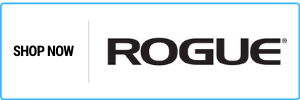Want help finding the right Olympic barbell? Here’s a detailed look at the best Olympic barbells for every kind of lifter and budget.
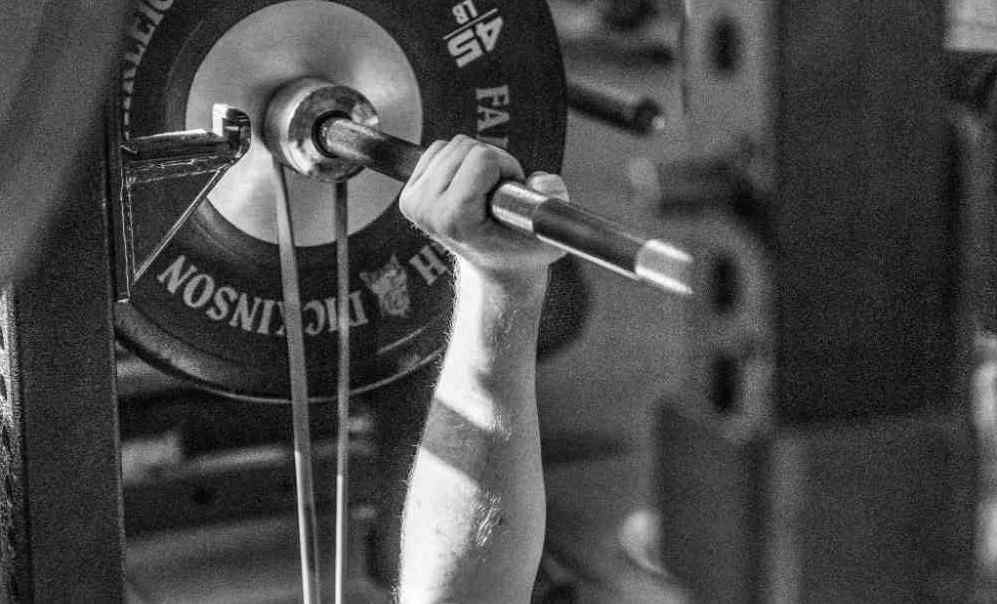
Thanks in part to a worldwide pandemic, there’s never been a better time to be shopping for an Olympic barbell for your home gym.
(Provided the barbell you want is in stock, of course…)
With plenty of companies producing high-grade Olympic barbells, there is an almost overwhelming variety of options to pick from.
Even though the function is super simple—load with weight, pick weight up, put weight down—there is a heaping spoonful of options when it comes to choosing the right Olympic barbell.
Tensile strength. Yield. Whip. Sleeve length. Knurling. And of course, you’ve got price as a major factor.
[Confused by all of the lingo and terminology when it comes to barbells? At the bottom of the page is a glossary and things you need to know when choosing the right Olympic barbell.]
Over the years of training and stocking my own home gym, I’ve had a chance to try just about every Olympic barbell under the sun.
Some great, some good, some sucky.
Below is a full breakdown of the best Olympic barbells on the market.
No matter your training experience, goals in the gym, and budget, there is a bar for you.
Let’s get to it.
Rogue Ohio Bar
⭐ Best overall Olympic barbell
The champ is here.
Rogue makes the best Olympic barbells when you factor in cost, durability, and tensile strength. Sure, there are more premium bars out there (and we’ll look at a couple of them shortly), but in terms of best for daily use, plus the fact they are actually made in the United States, the Rogue Ohio Bar stands alone at the top.
Rogue’s gear can get very expensive, especially if you start taking a look at their full-size power racks or leg machines. But the Ohio Bar is approachable in price (it pulls double duty as my favorite Olympic barbell under $300 as well), costing around $280 and available in a wide variety of finishes.
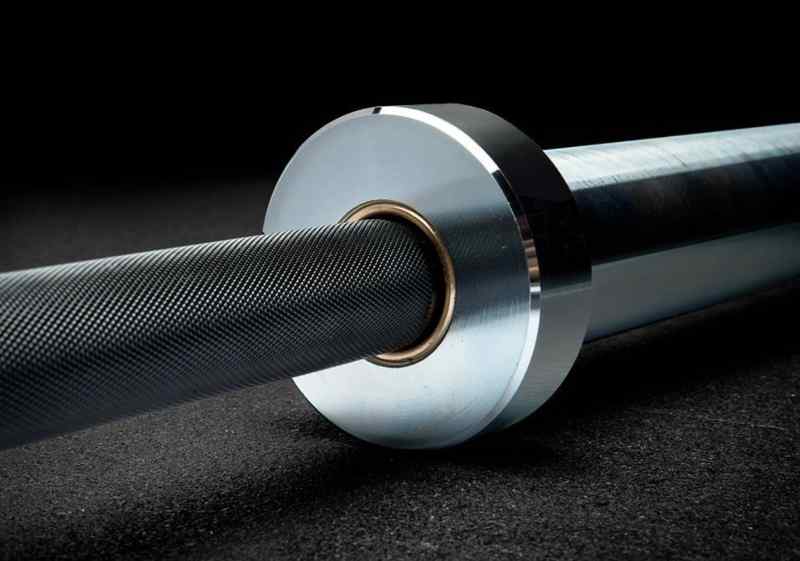
Strong as hell, with a 190,000 psi tensile strength rating, the Ohio Bar spins nicely. The center of the bar is smooth and free of knurling, and with a 16.4” loadable sleeve you got tons of room to load up thick bumper plates.
The Ohio Bar comes in a few different finishes, including black oxide (the all-black looks badass, let’s be honest) and you can even customize the colors of the bar.
Pricewise, the Ohio Bar is an excellent value, starting at just $295.
Customize and pick up your Ohio Bar at Rogue’s website here.
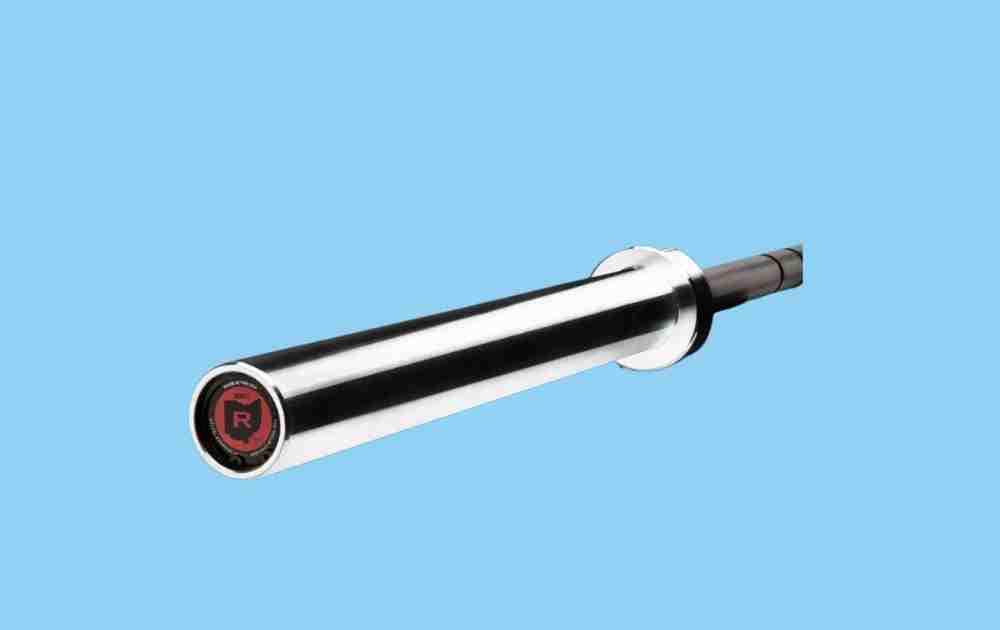
Rogue Olympic WL Barbell
⭐ Best competition-grade Olympic barbell
Another bar in Rogue’s lineup is the Olympic WL Bar. It’s Rogue’s strongest bar, with a tensile strength of 215,000 (same as the Eleiko IWF bar, which will look at next) and it meets the specifications by the IWF for competition bars.
Built in the USA, the bar comes in a variety of finishes (Cerakote, bright zinc, stainless steel) and sizes. The men’s bar has a diameter of 28mm and a 20kg weight while the women’s Olympic bar measures up at 25mm and 15kg. The sleeve length is 16.25”; plenty of room for all of your plates.
Related: 5 Best Rogue Barbells
Smooth strips help you center the bar during big lifts and there is no center knurling. In terms of pure aesthetic, this bar is good looking and I love the Rogue logo emblazoned on the middle of the bar.
The big edge here—specifically as it relates to competition bars—is the price point. While the Eleiko Competition bar is north of $1,000, Rogue sells these bars for $585.
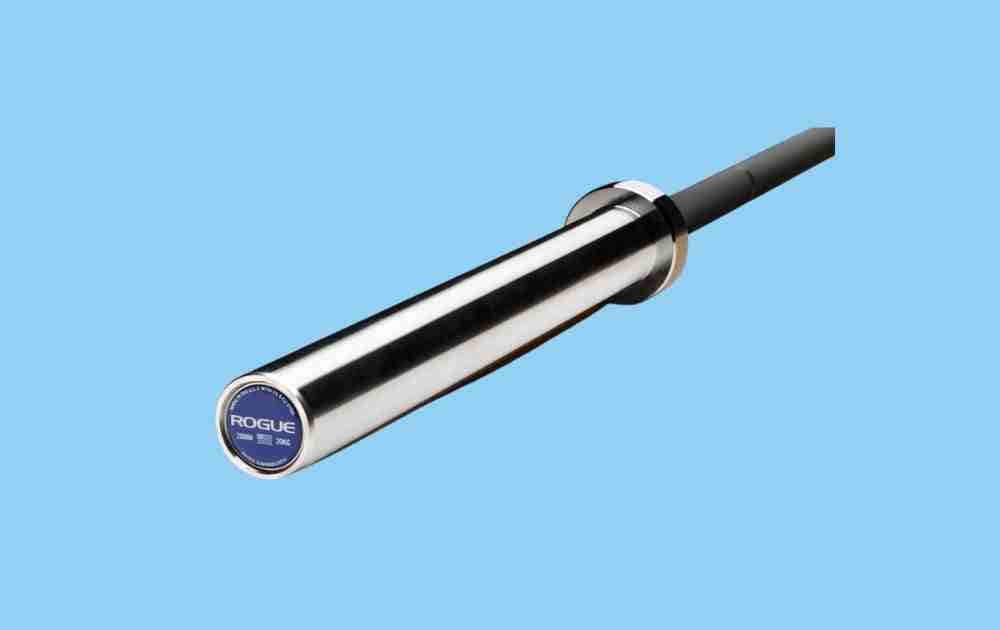
Rogue has a deep line-up of bars.
Here’s a couple of other of my favorites that you should consider during your hunt for the right barbell for you.
Rogue Bar 2.0
The Rogue Bar 2.0 and the Ohio Bar could easily be interchanged for my top pick. The main difference between the Bar 2.0 versus the Ohio Bar is a composite bushing system that is self-lubricating. Rogue says it spins easier than the Ohio Bar, but honestly, I can’t tell the difference.
Besides that, the tensile strength is identical (190,000 psi) and the Bar 2.0 matches the Ohio Bar in durability and flex. The Rogue Bar 2.0 is also a few bucks cheaper, at $280.
See Rogue’s website here for current pricing and customization options for the Bar 2.0.
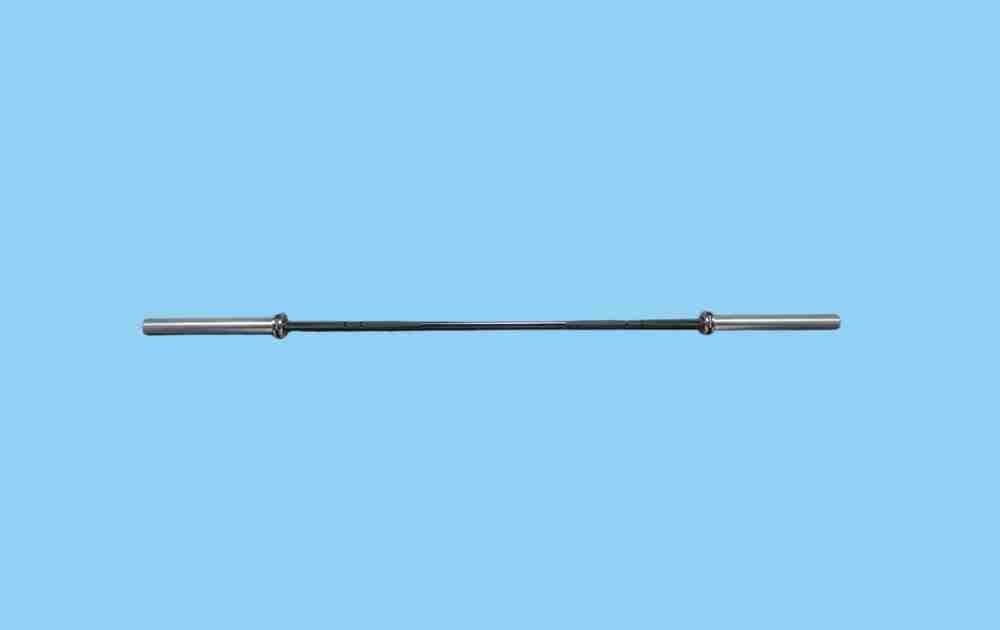
Rogue Boneyard Olympic Barbells
You know how your favorite doughnut shop throws out unsold (and uneaten!) doughnuts at the end of the day?
Well, Rogue doesn’t do that with the blemished bars that don’t meet the Rogue cut during production. Rogue regularly has barbells with minor blemishes (no structural defects) for sale on their website for a reduced price.
Probably the only time you will get a Rogue barbell for less than $200. Check out Rogue’s current lineup of Boneyard bars here.
Eleiko IWF Weightlifting Competition Barbell
Eleiko is one of the elite names in Olympic lifting. The IWF Weightlifting Competition Barbell is a premium bar—costing over $1,000—and certified by the folks over at the International Weightlifting Federation for competitive use.
Made in Sweden, Eleiko’s bars have deep knurling that is made for grip-it-and-rip-it 1RM attempts. The bar has center knurling and spin is produced by needle bearings, which helps the bar move during dynamic lifts.
Eleiko’s competition bar is 28mm and you get a solid 415mm of sleeve length for stacking plates. This barbell definitely isn’t for the casual lifter, but competitive lifters will recognize the name and appreciate the lifetime warranty, and the whopping 215,000 tensile strength.
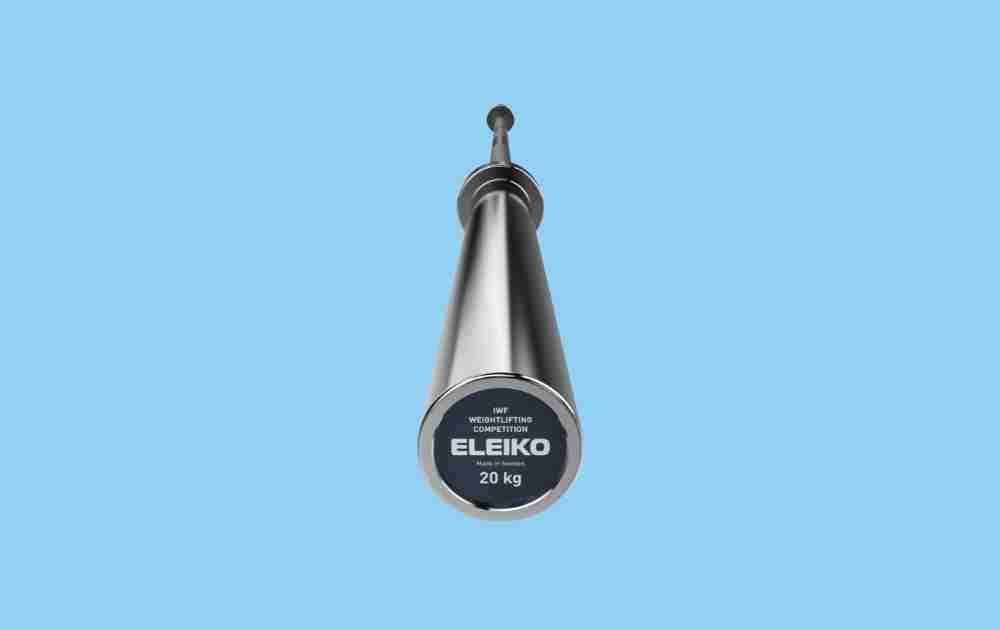
The bars are available exclusively through Eleiko’s website here.
CAP Barbell – “The Beast”
⭐ Best budget Olympic barbell
Okay, okay—the hefty price tag of the Eleiko bar has you a little rattled. You don’t need a bar that gangster. You want an Olympic barbell that can take a beating but that is more in the $200 range.
CAP Barbell is who you are going to want to talk to.
Within their range of Olympic barbells is “The Beast.” A budget-friendly bar that costs under $200 (just $170 the last time I checked over on Amazon) the Beast is tough, with a tensile strength of 110,000 and a grip thickness of 30mm. Built with a solid steel core, this bar has a medium-depth knurl that won’t tear up your hands with daily use.
CAP Barbell makes excellent stuff—I’m a big fan of their weight plate storage rack and cast-iron dumbbells—and they deliver with this Olympic barbell that is perfect for experienced lifters who want an all-purpose bar.
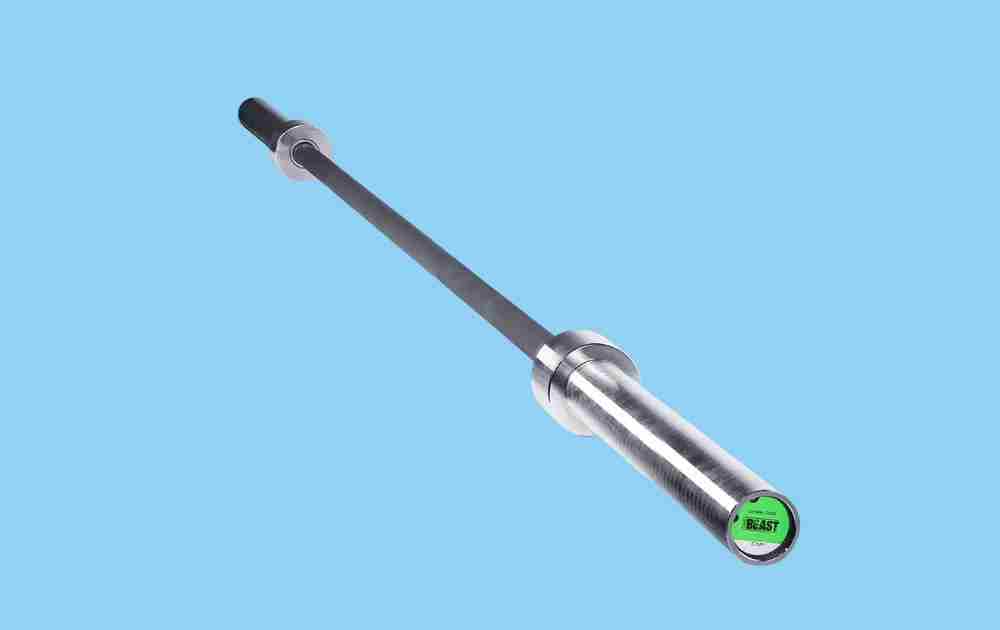
CAP Barbell 6-Foot Olympic Barbell
Olympic barbells are almost universally seven feet… tall? Wide? But there are some exceptions, especially with specialty bars.
For lifters who want a shorter barbell and who aren’t planning on using heavy weight, CAP Barbell makes a killer 6-foot Olympic barbell that looks great and can handle
With the shorter width, you do lose a bit of the tensile strength of the bar, rated at 63,800 psi, which is about 1/3 the strength of the Rogue Ohio Bar. CAP recommends a maximum of 500lb of weight, making it a good choice for novice and intermediate lifters.
Other key features include sleeves that are 11” in length and the bar is knurled both where your hands go as well as in the middle.
Coated in black powder paint to prevent corrosion, the CAP Barbell 6-Foot Olympic bar is my go-to for a shorter bar.
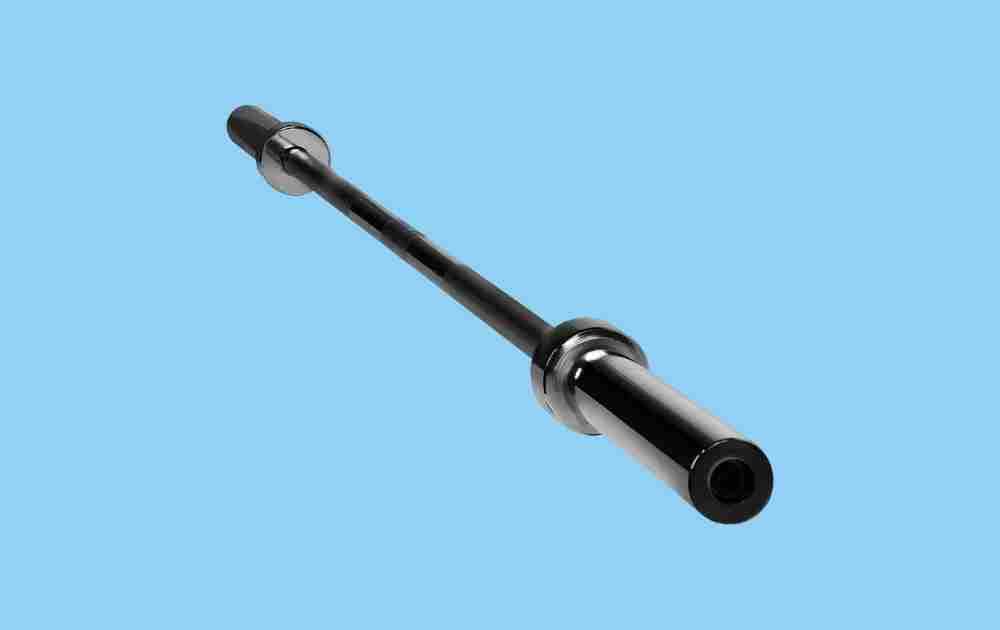
Synergee Open 15 and 20kg Olympic Barbells
⭐ Best barbell available on Amazon
Synergee is another low-cost barbell that is frequently available on Amazon. In fact, when I started building out my home gym when Covid hit the planet in the spring of 2020, the Synergee Open bar was the first one I was able to get my hands on.
In the 18 months that I have been training with it, the Open bar has been a great daily barbell for me and my wife. The tensile strength punches up for the price—150,000 psi—and Synergee rates the bar at 1,500lb weight capacity, making it plenty strong for most lifters and athletes.
As a daily training bar, the Synergee Open Olympic Barbell is durable and super cost-effective ($156-180 on Amazon depending on bar weight—check here to see current pricing and availability).
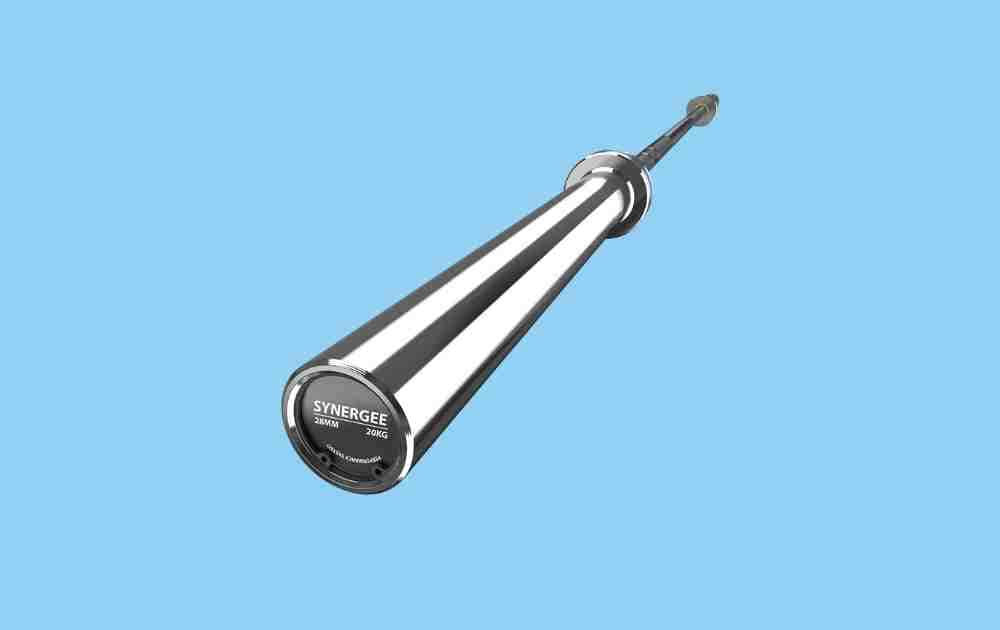
What to Look for When Buying an Olympic Barbell
Choosing the right Olympic bar is easier once you get a handle of the lingo associated with them and the key features that separate the strong ones from the trash.
Here are the things to look out for when you are sorting through the bars on the market.
? 7 feet long. Some are shorter, but by and large, this is the default width of Olympic barbells. Hex/trap bars, e-z curl bars, and other specialty barbells are much shorter. Powerlifting barbells, for example, are also shorter.
? Fit Olympic weight plates. Olympic plates—whether they are cast iron weight plates or bumper plates—for Olympic bars. Obvious for some, but worth noting. Standard weight plates (1” diameter) won’t work with this type of barbell.
? Vary widely in price. Like most fitness equipment, whether it’s dumbbells or power racks, Olympic barbells come in all prices, from the super-budget ($100-150) to $1,000+. But if you looked at the bars on this list, you will see that there are some very cost-effective options out there.
? Tensile strength. This is the main thing you want to compare when searching for a well-built bar. While barbell makers will happily tell you how much weight a bar can hold, the true test is in the tensile strength of the steel in the bar. High-grade Olympic barbells have a tensile strength of 190,000 psi (pounds per square inch). Most of us can get by with a lower tensile strength (100,000-130,000 psi) but heavy lifters will want a stronger bar.
? Sleeve length. Sleeve length is crucial for people who train a lot with bumper plates, which can quickly take up a lot of room on the bar as the weight goes up. The loadable area on the sleeves is usually around 16 inches.
? Knurled. The knurling is the textured ridging of the barbell that gives you grip. The depth of the knurling varies, but most will have a medium, diamond-shaped knurl. Deeper knurling—and the added grip it provides—is better for 1RM attempts and competition. Barbells also usually have notches or strips that are great for balanced hand placement when lifting.
? Sleeves that spin. Olympic barbells have spinning sleeves that allow you to rotate the bar during dynamic lifts. There are two kinds of spin systems in barbells: bushings and needle bearings. Bushings (made of nylon or brass) are more durable while needle bearings spin a little faster. Bars with needle bearings are typically more expensive.
? Whip. Olympic bars have a little bit of flex that helps move the weight. Watching competitive weightlifting you will see athletes pause before each stage of a lift to get a little bounce.
? Finishes. Lastly, the finish of the bar. A chrome finish is the most popular as it is cheap and durable. Most of the barbells you will find on Amazon, for example, have a chrome finish. Others include stainless steel, Cerakote, black oxide, and so on.
Recommended Reading
6 Best Barbells for Home Gyms. The barbell is an essential piece of your home gym. Read on for reviews of the best barbells for every kind of athlete and let’s get to crushing some weight.
6 Best Powerlifting Barbells (and How to Choose the Right One for Big Lifts). Powerlifting barbells are strong, stiff, and are mostly very affordable. Here’s a breakdown of the best power bars for every kind of athlete.
